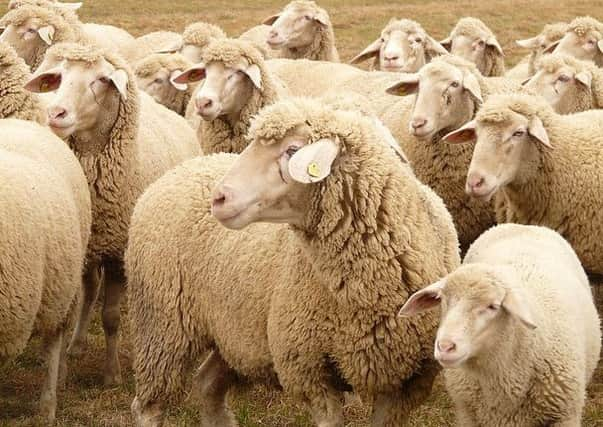Scots scientists work out why sheep flock together


Researchers from the University of Aberdeen and a French consortium have come up with a mathematical model which shows that sheep balance the need to eat with the instinct to protect themselves from predators.
It comes after the team embarked on a field study of a flock of merino sheep in the south of France to evaluate patterns of animal movement.
Advertisement
Hide AdAdvertisement
Hide AdThe behaviour of large groups of creatures - such as starlings, shoals of fish and large swarms of midges - are believed to be evolutionary responses to that enable animals to cope with challenges such as finding food and keeping safe.
Dr Ginelli, a physicist and applied mathematician who researches complex and dynamical systems, was curious to learn how this might apply to the movement of sheep and how the behaviour of one individual could trigger a collective response by the group.
He claimed the results could help understand human behaviour.
Dr Ginelli said: “This is the first quantitative study of this kind of behaviour.
“What we observed was normal grazing across the available territory, but punctuated by intermittent and sudden ‘avalanche-like’ regrouping of the grazing sheep.
“This suggests that a flock of sheep exhibits a balance between dispersing to explore the maximum area of space to feed, and the need to speedily regain contact with the other group members should a predator approach. And the mathematical model we developed supported this behaviour.
“Cooperative behaviour in social groups is a very important issue in evolutionary biology. Our results may eventually help us to understand the behaviour of other groups of animals - including humans - in a stressful group situation.”
The researchers from the University of Aberdeen worked with researchers from CNRS Toulouse, CEA-Saclay and the University of Nice.
Advertisement
Hide AdAdvertisement
Hide AdResearchers found the flock spread out slowly across the field, foraging as they went.
But every once in a while and without any specific trigger, a sheep near the periphery would become aware of her isolation from the group and vulnerability to predators, and would sprint back into the centre for safety. A
As the first sheep runs, others start to follow it, clustering into the centre. Then a point is reached at which the animals stop moving and continue grazing as before, now in a densely packed group.